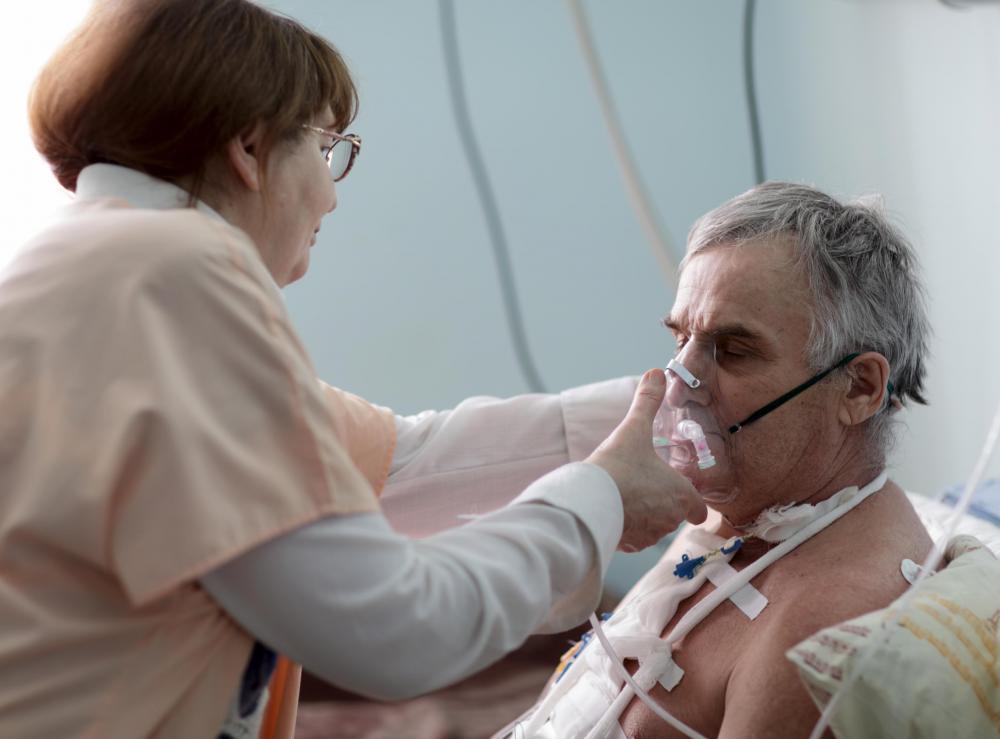At TheHealthBoard, we're committed to delivering accurate, trustworthy information. Our expert-authored content is rigorously fact-checked and sourced from credible authorities. Discover how we uphold the highest standards in providing you with reliable knowledge.
What is an Aortic Root Replacement?
Aortic root replacement is a type of surgery used to treat a swelling at the root of the body's biggest artery, known as the aorta. The aortic root is located at the top end of the aorta where it meets the heart. A swelling, or aneurysm, in the aorta is most often due to atherosclerosis, a condition where fatty deposits build up inside arteries, causing weakening of the walls. As a bulging aneurysm carries a risk of bursting, with possibly fatal consequences, aortic root surgery is performed to remove the damaged part of the aorta. A replacement section, made of artificial fabric or natural tissue, is then inserted instead.
There are two ways of carrying out aortic root replacement surgery. In what are known as valve-sparing aortic root replacement techniques, an important structure known as the aortic valve is left in place. Other root replacement methods replace both valve and root.

The aortic valve is situated in the root of the aorta where it regulates the blood flowing from the heart's left lower chamber, or ventricle. When blood is pumped out of the left ventricle, the aortic valve opens to allow it to pass through. Following the ejection of blood, the valve closes to prevent any blood leaking back into the heart.
Patients who have aortic root aneurysms, but whose aortic valves still function, may be treated using valve-sparing aortic root replacement. In what is called the David procedure, the damaged section of the aorta is removed, and a synthetic graft is attached to the heart in its place. The original aortic valve is sewn into position inside the graft. This type of cardiac surgery is what is referred to as open-heart surgery, where the chest is opened up and a machine acts as the heart and lungs, supplying the body with oxygenated blood while the heart is being operated on. It may require a hospital stay of about a week, and recovery may take up to six weeks.

For patients whose aortic valves are not functional, aortic root replacement involves replacing the valve as well as the root. Artificial or natural tissue components, or a combination of the two, may be used. A synthetic graft containing a valve is long-lasting but carries an increased risk of causing a blood clot, making it necessary to take anticoagulant drugs after the procedure. Alternatively, an aortic root and valve can be transplanted from a human tissue donor, or a valve from an animal may be fitted inside an artificial aortic root. Using biological valves means that anticoagulant medication is not required, but they are not as durable as mechanical versions.
AS FEATURED ON:
AS FEATURED ON:

















Discuss this Article
Post your comments